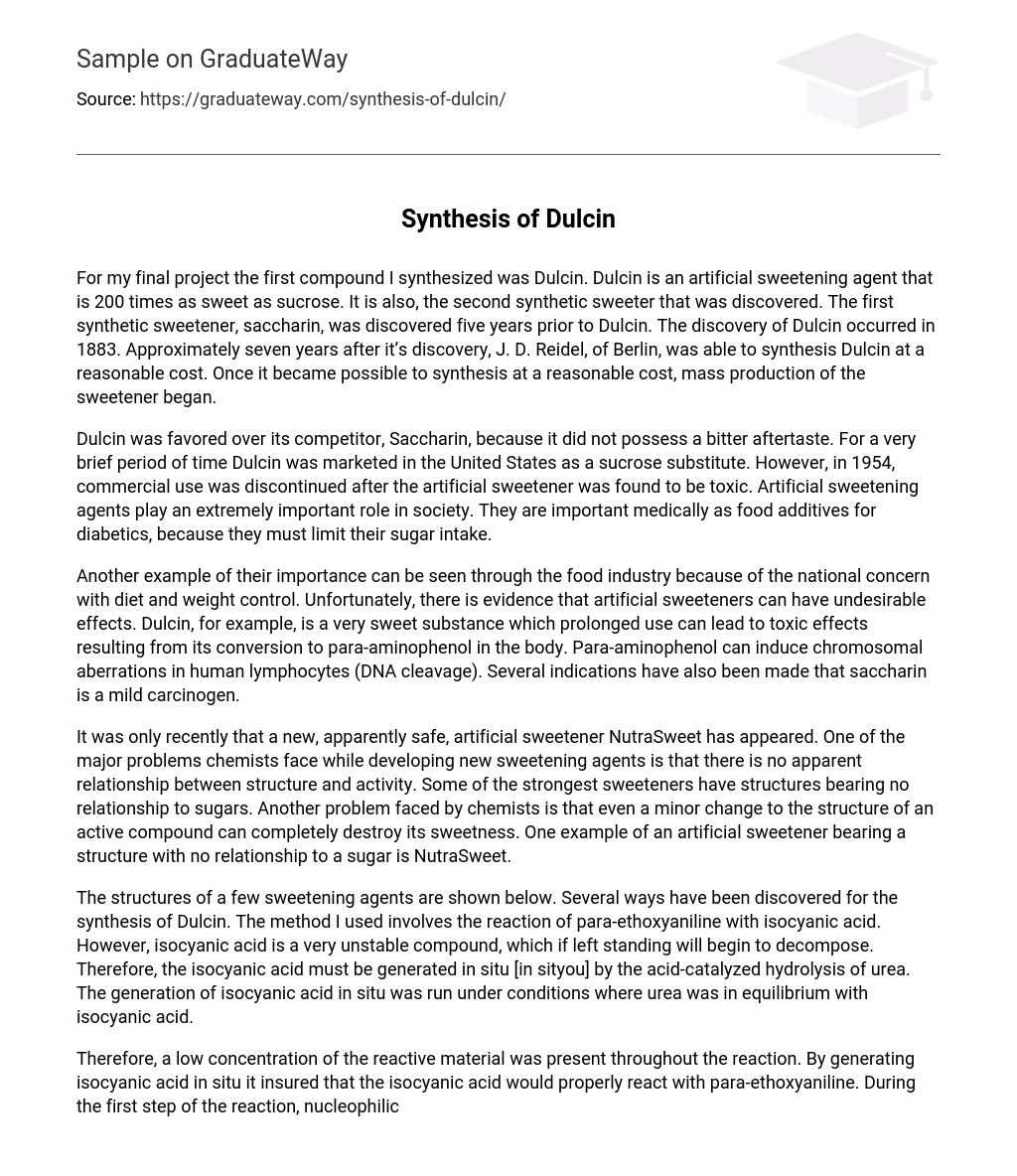For my final project the first compound I synthesized was Dulcin. Dulcin is an artificial sweetening agent that is 200 times as sweet as sucrose. It is also, the second synthetic sweeter that was discovered. The first synthetic sweetener, saccharin, was discovered five years prior to Dulcin. The discovery of Dulcin occurred in 1883. Approximately seven years after it’s discovery, J. D. Reidel, of Berlin, was able to synthesis Dulcin at a reasonable cost. Once it became possible to synthesis at a reasonable cost, mass production of the sweetener began.
Dulcin was favored over its competitor, Saccharin, because it did not possess a bitter aftertaste. For a very brief period of time Dulcin was marketed in the United States as a sucrose substitute. However, in 1954, commercial use was discontinued after the artificial sweetener was found to be toxic. Artificial sweetening agents play an extremely important role in society. They are important medically as food additives for diabetics, because they must limit their sugar intake.
Another example of their importance can be seen through the food industry because of the national concern with diet and weight control. Unfortunately, there is evidence that artificial sweeteners can have undesirable effects. Dulcin, for example, is a very sweet substance which prolonged use can lead to toxic effects resulting from its conversion to para-aminophenol in the body. Para-aminophenol can induce chromosomal aberrations in human lymphocytes (DNA cleavage). Several indications have also been made that saccharin is a mild carcinogen.
It was only recently that a new, apparently safe, artificial sweetener NutraSweet has appeared. One of the major problems chemists face while developing new sweetening agents is that there is no apparent relationship between structure and activity. Some of the strongest sweeteners have structures bearing no relationship to sugars. Another problem faced by chemists is that even a minor change to the structure of an active compound can completely destroy its sweetness. One example of an artificial sweetener bearing a structure with no relationship to a sugar is NutraSweet.
The structures of a few sweetening agents are shown below. Several ways have been discovered for the synthesis of Dulcin. The method I used involves the reaction of para-ethoxyaniline with isocyanic acid. However, isocyanic acid is a very unstable compound, which if left standing will begin to decompose. Therefore, the isocyanic acid must be generated in situ [in sityou] by the acid-catalyzed hydrolysis of urea. The generation of isocyanic acid in situ was run under conditions where urea was in equilibrium with isocyanic acid.
Therefore, a low concentration of the reactive material was present throughout the reaction. By generating isocyanic acid in situ it insured that the isocyanic acid would properly react with para-ethoxyaniline. During the first step of the reaction, nucleophilic addition occurs between the amino group of para-ethoxyaniline to isocyanic acid. This is then followed by the protonation of the initial addition product generating the urea functional group of the product.





